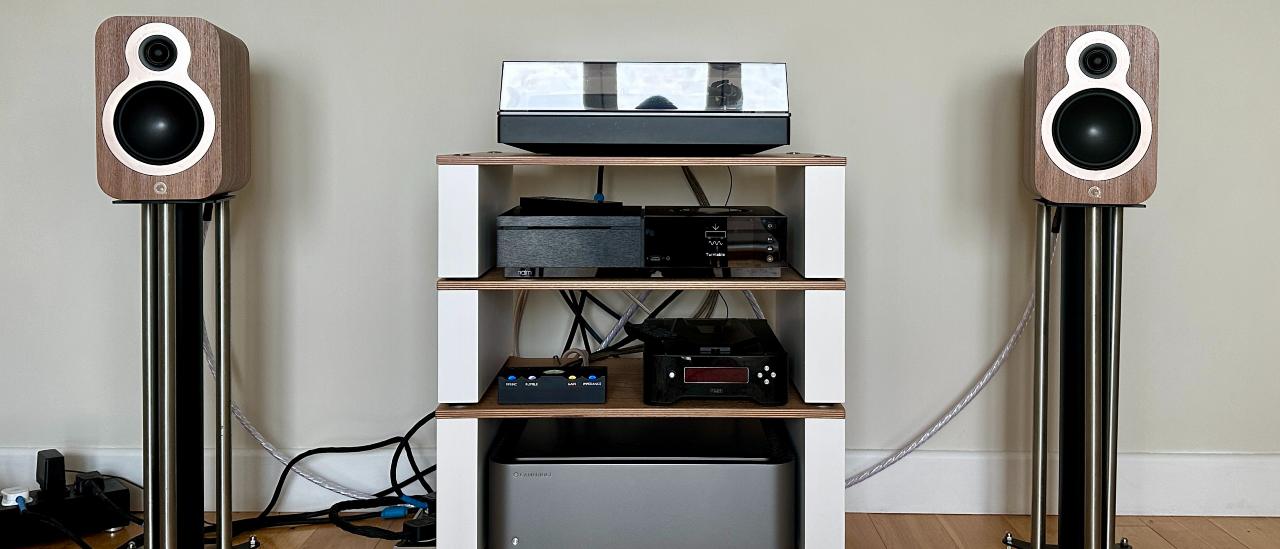TechRadar Verdict
The direct and illuminating sound you get from these beautifully crafted and finished cabinets makes the Q Acoustics 3020c a real contender at the money. In action, they prove forthright, detailed and surprisingly assertive. OK, so they're not the heftiest speaker this sort of money can buy, but still, they present an invigorating and insightful listen.
Pros
- +
Assertive, detailed and properly organized performance
- +
Impressive standard of build and finish
- +
Interesting driver technology
Cons
- -
Slightly lacking in both dynamic and low-end power
- -
Unconventional dimensions
- -
Plenty of worthwhile competition
Why you can trust TechRadar
Q Acoustics 3020c: Two-minute review
The Q Acoustics 3020c is one design in a five-strong range of (relatively) affordable new speakers from the British brand's 3000c series. Four different finishes are available, and no matter which one you prefer it will do justice to a braced, elegantly curved cabinet that’s just slightly longer than it is tall. Satin nickel driver surrounds behind magnetically attached grilles only add to the impression of a thoughtful and quite upmarket design.
A driver array consisting of a 22mm soft dome tweeter that’s decoupled from the main speaker baffle is bolstered by a rear-facing bass reflex port. Sat below is a 120mm mid/bass driver of the ‘continuous curved cone’ design that Q Acoustics first introduced in a far more expensive range of passive loudspeakers than this one. Claimed frequency response of 60Hz - 30kHz is the result and, if accurate, should be more than adequate for people who don’t prioritize ‘bass, and plenty of it’ over everything else. As well as the reflex port, the rear panel also features a single pair of extremely low-profile cable binding posts.
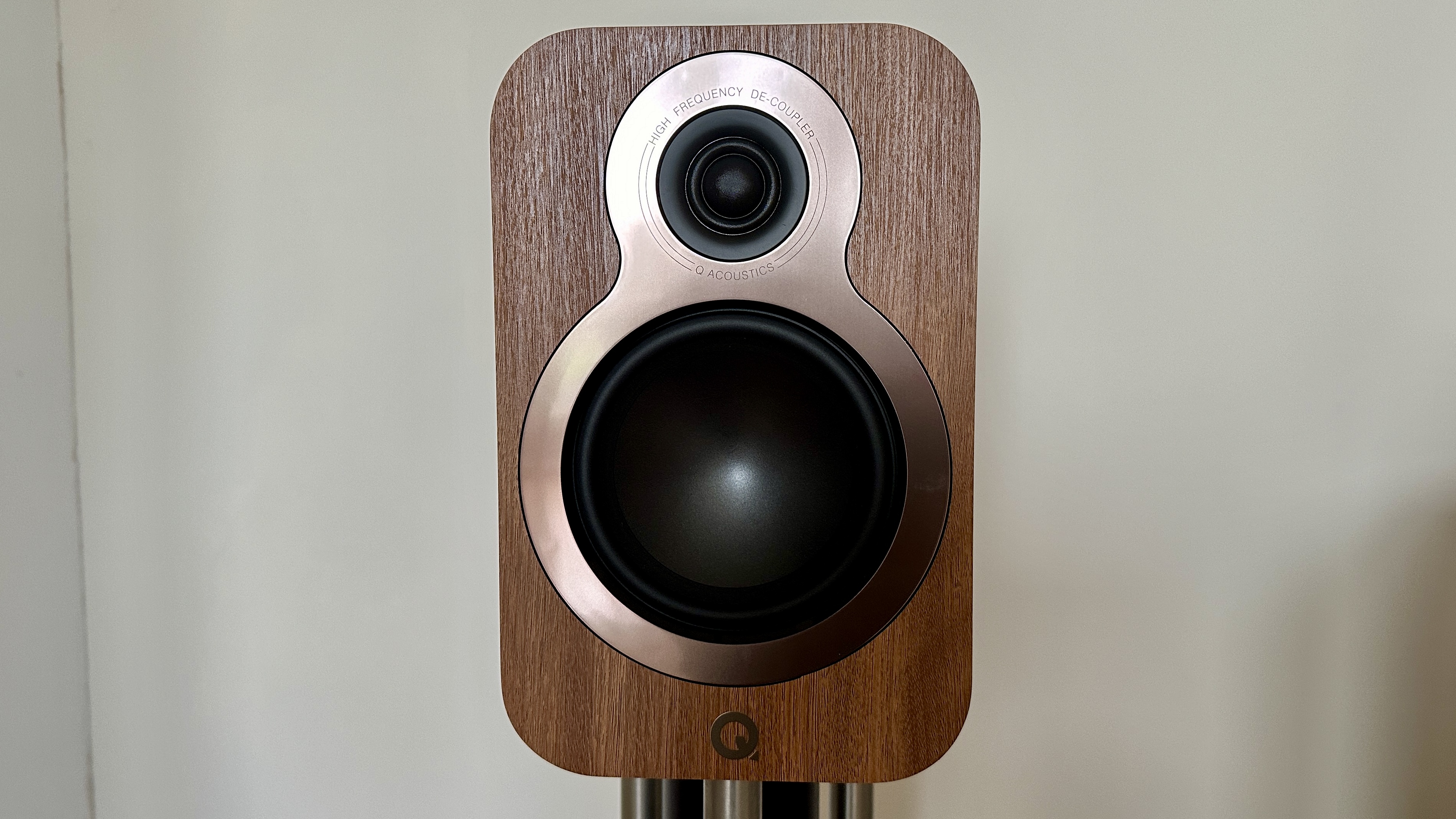
In action, the Q Acoustics 3020c prove a forthright, detailed and surprisingly assertive listen. No matter the type of music you listen to, and no matter its source, they sink their teeth in and let it know who’s boss immediately. Detail levels are high, drive and attack is plentiful, and both the tonal balance and the integration of the frequency range are completely convincing. Their stereo focus is impressive, their soundstaging abilities even more so, and the sort of momentum and urgency with which they can imbue a recording is always striking.
They’re not the heftiest speaker this sort of money can buy, it’s true – the low-frequency stuff they generate is taut and straight-edged, but could conceivably be punchier. And when it comes to dynamic expression, there’s a slight lack of headroom apparent. Because their default position is to be reasonably intense to start with, any changes in intensity are necessarily inhibited – just a touch, to be fair, but it’s a trait nevertheless.
Neither of these things prevent the Q Acoustics 3020c being a thoroughly enjoyable and quite invigorating listen, though, which warrants entry to our best stereo speakers roundup. Anyone with this sort of money for a speaker of this sort of size needs to hear them.
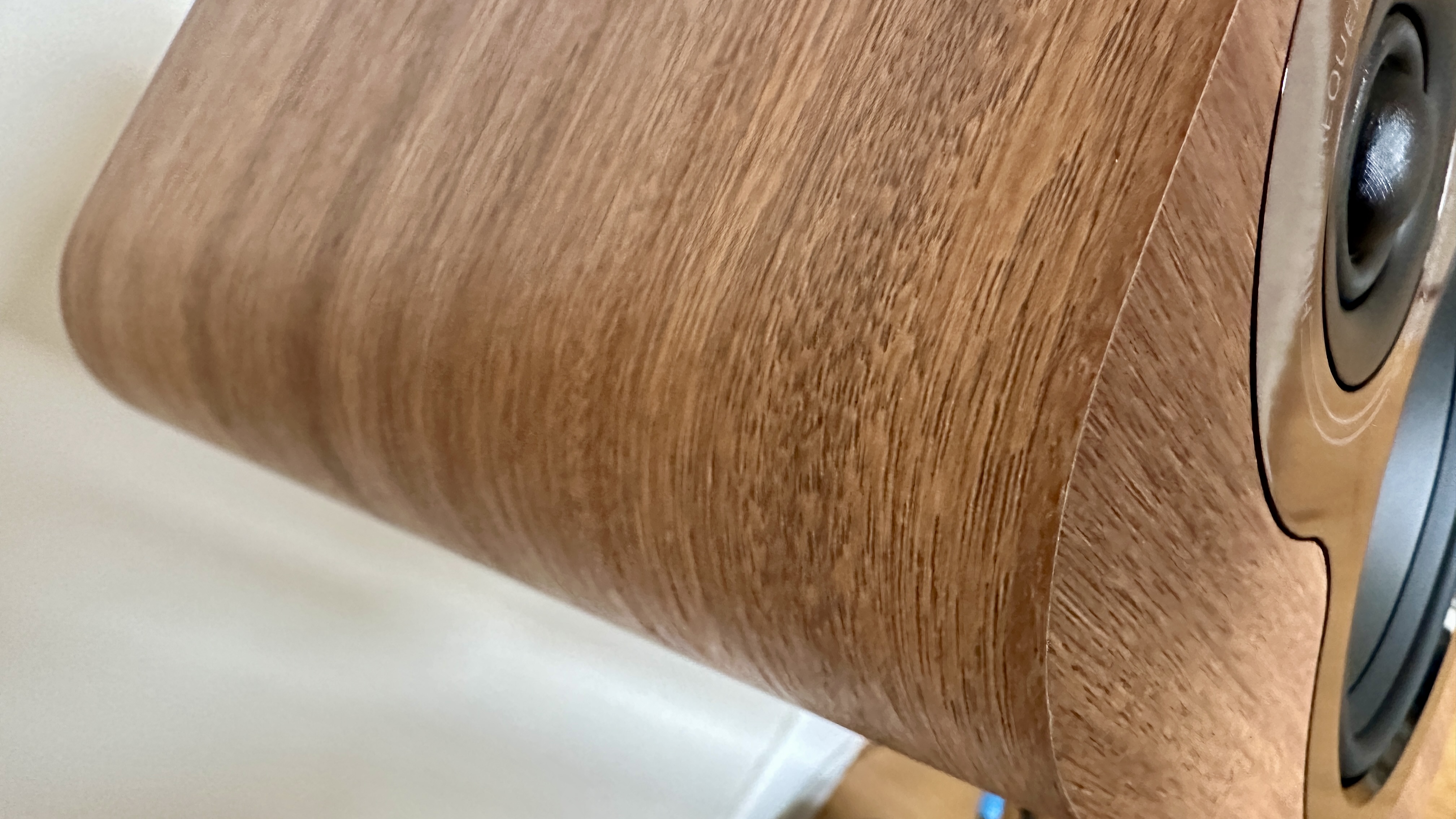
Q Acoustics 3020c review: Price & release date
- Released August, 2024
- Priced $499 / £399 / AU$899
The Q Acoustics 3020c are on sale now, and in the United States they sell for $499 per pair. In the United Kingdom, they go for £399, while in Australia you’re looking at AU$899.
It’s an eye-catching price, for sure, and exciting when you remember just how much excellence Q Acoustics has demonstrated at the loudspeaker entry level. But competition is fierce: from Dali and Elac to KEF and JBL, there are numerous well-regarded alternatives – and they're far from alone...
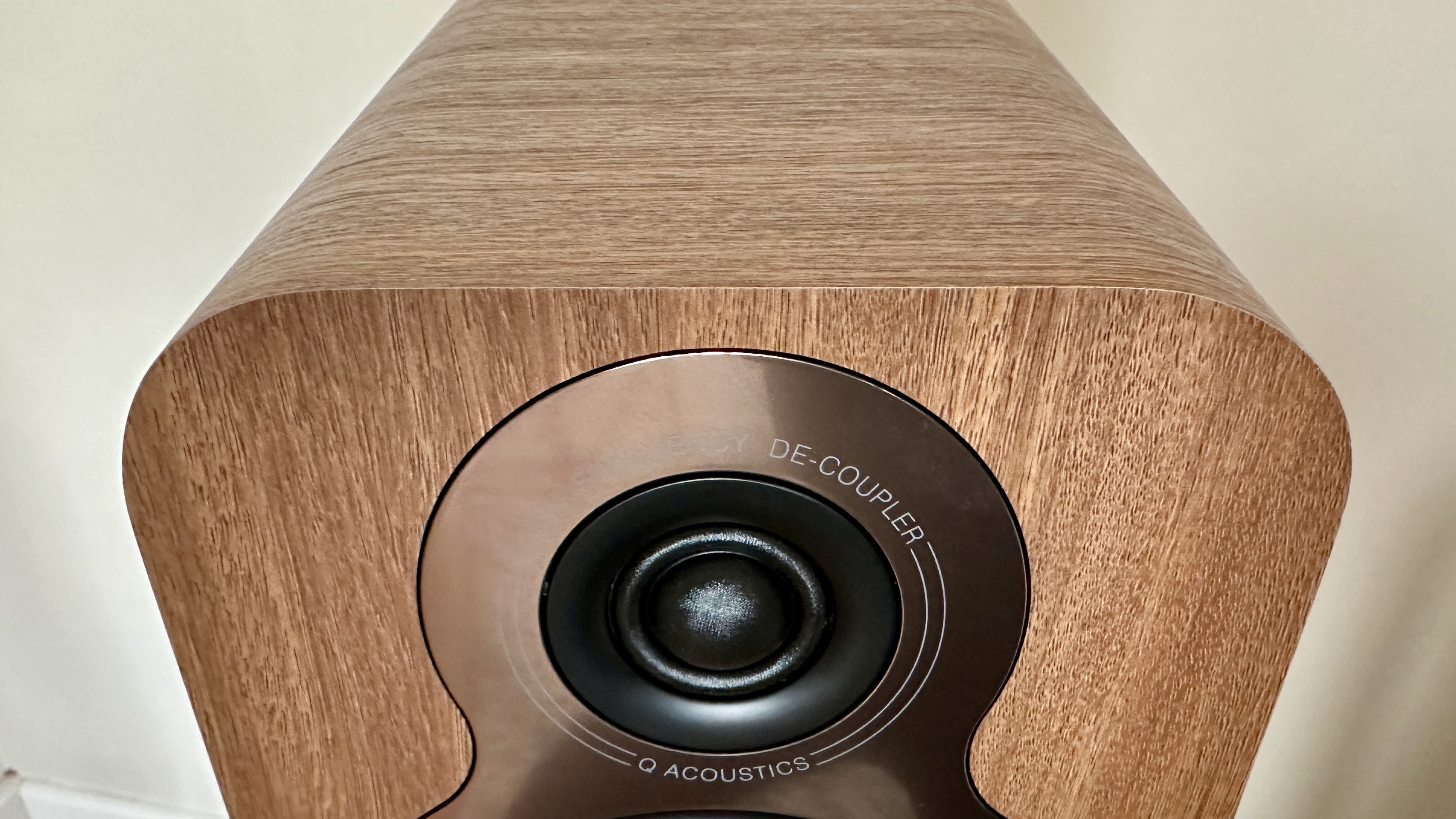
Q Acoustics 3020c review: Features
- 120mm mid/bass driver
- 22mm decoupled soft dome tweeter
- 60Hz - 30kHz frequency response
Like most passive loudspeakers, the Q Acoustics 3020c aren’t exactly overburdened with features. A couple of drive units, a helpfully positioned bass reflex port and some speaker binding posts are about all that can be expected – and sure enough, that’s about all the 3020c have.
Mind you, this being Q Acoustics those features are thoroughly implemented and entirely fit for purpose. The 22mm soft dome tweeter, for instance, is hermetically sealed and mechanically isolated from the baffle from which it protrudes. To all intents and purposes it’s floating, which prevents pressure modulations both from the energy it’s producing and from the mid/bass driver beneath it. The chamber it sits in is vented in an effort to minimize distortion, and has a lower-than-usual crossover point in order to make integration with the mid/bass driver as smooth as possible.
The mid/bass driver itself is a 120mm design of the ‘continuous curved cone’ type Q Acoustics first introduced on much more expensive loudspeakers than this one. Its continuous curve profile offers well-controlled frequency response, enhanced low-frequency dynamics and excellent dispersion characteristics – Q Acoustics suggests it offers the bass performance of a more common conic design with the midrange control of a flared cone design. The best of both worlds, in other words.
There’s a modestly sized bass reflex port venting from the rear of the cabinet, just above a single pair of extremely low-profile cable binding posts – Q Acoustics provides port bungs to help ensure the 3020c’s low-frequency activity is appropriate no matter where in your room they end up being positioned. The arrangement is good for a frequency response of 60Hz - 30kHz, according to the manufacturer, and with nominal impedance of six ohms and sensitivity of 87dB, the 3020c shouldn’t be any kind of problem for an amplifier to drive.
- Features score: 5/5
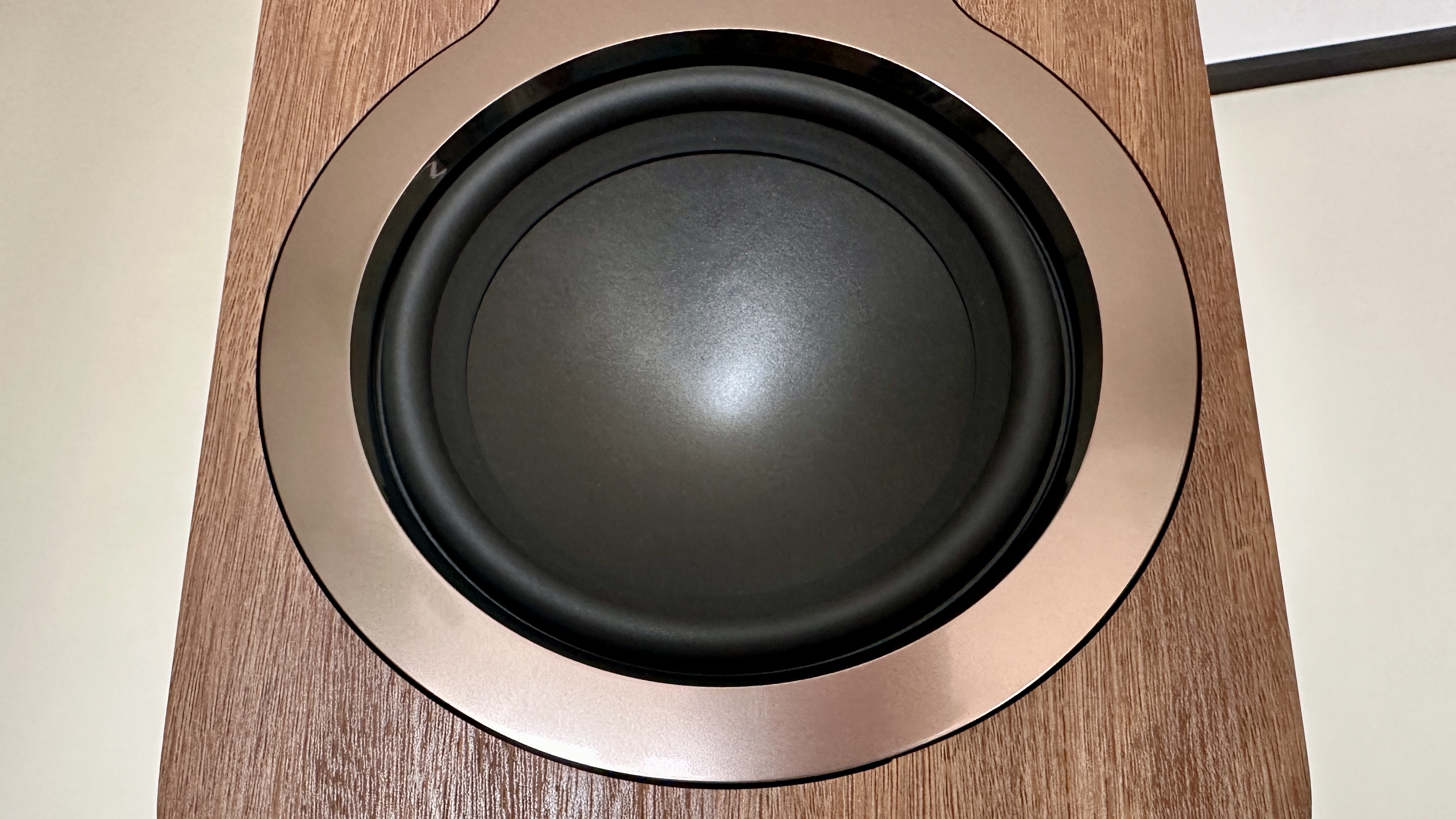
Q Acoustics 3020c review: Sound quality
- Positive, upfront and informative sound
- Impressive powers of resolution
- Not as out-and-out punchy or dynamic as they might be
Sit up straight and pay attention – that seems to be the 3020c's attitude when it comes to sound. This is an assertive and direct pair of loudspeakers, and while it has a range of talents to reveal, what’s most immediate about the 3020c is, well, just how immediate it is.
Once through a copy of Fela Kuti’s Water No Get Enemy makes the point in unequivocal fashion. There’s plenty of harmonic dynamism on display, a really impressive amount of detail retrieved at every turn, but it’s the sheer bite and attack of the recording, the blare and the stridency, that the Q Acoustics really zero in on. This kind of positivity could, if imperfectly deployed, seem like raucousness – here it’s more a kind of urgency. Music-making is a serious business, according to the 3020c, and there’s really no time to pussyfoot.
If this makes the Q Acoustics sound in any way uncouth, be assured that’s not the case. Their tonality is judged nicely – they’re a neutral and uncolored listen, from the top of the frequency range to the bottom. The integration of the two drivers is smooth, the contributions of the bass reflex port are careful, and the inputs of each area of the frequency range are properly balanced and entirely convincing. Details both broad and fine are confidently identified and contextualized throughout, and the minutiae of tone and texture is readily available as a result.
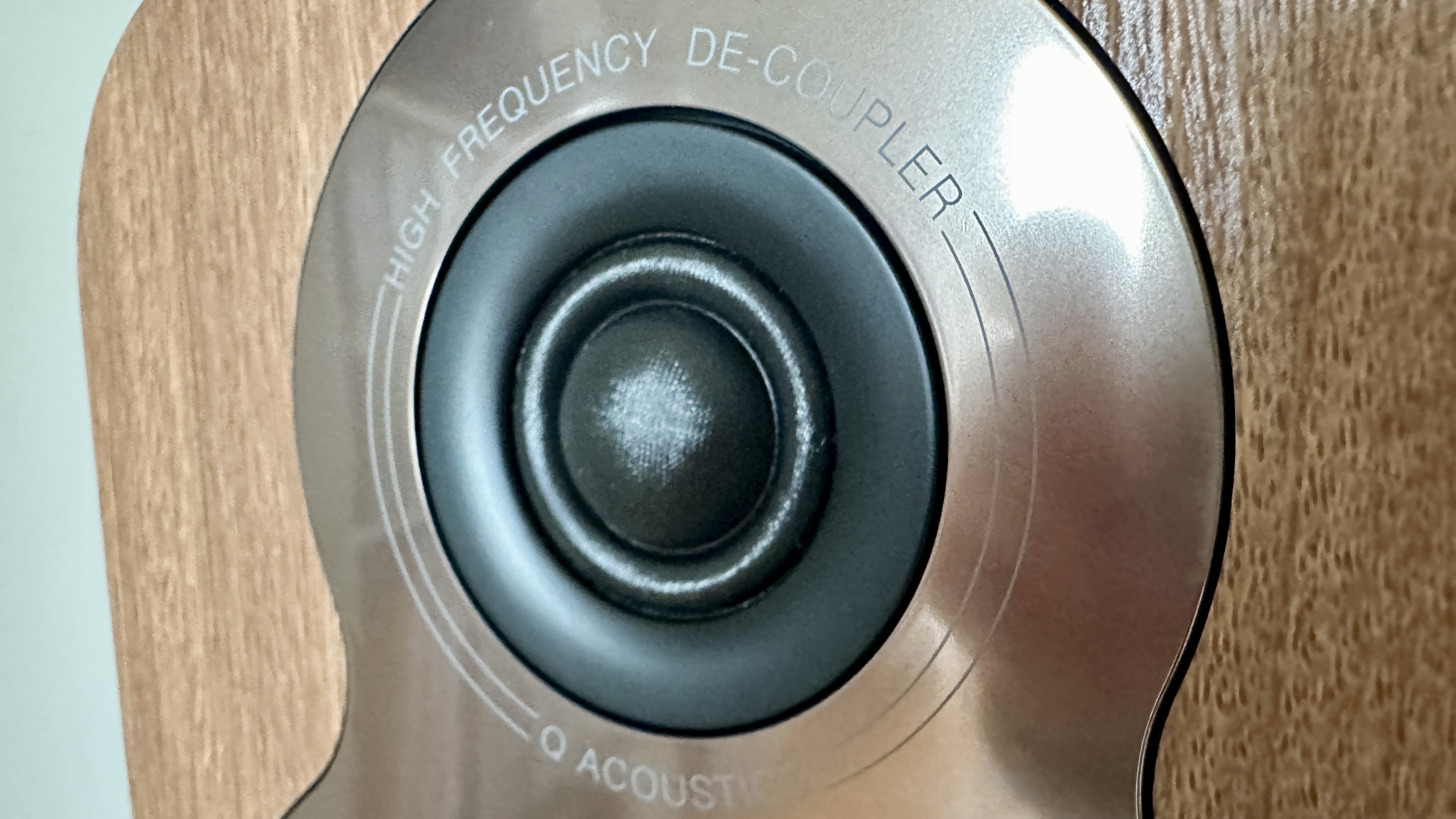
The soundstage the 3020c can create is large and properly organized, and there’s great stereo focus even when a recording is as packed with contributors as Fela Kuti’s. Switching to something on a much smaller scale – Anastasia Coope’s Woke Up and No Feet, for instance – allows the Q Acoustics to demonstrate how adept they are at opening up a recording and making each element available. That's even if, as with this recording, it’s lo-fi and lacking in separation in the first place.
The lower frequencies aren’t the meatiest you ever heard from a pair of speakers at this sort of money, it’s true, but there’s no arguing with how well controlled they are. There’s an almost martial observation of bass attack and decay, and the result is a spring-heeled approach to rhythmic expression that keeps momentum levels high and means music really drives along. If that’s the trade-off for a slight lack of outright punch and substance, it seems fair enough to me.
What’s just a touch less easy to accommodate is a slight lack of dynamic potency. It’s not as if the 3020c ignore changes in volume or intensity during the course of a recording, but they don’t breathe quite as deeply as some alternative designs when it comes to making these shifts completely obvious. They’re direct and attacking by default, and it seems this doesn’t leave them quite as much room for manoeuvre as is absolutely ideal. In isolation it’s a shortcoming that almost doesn’t register, but when you’re competing in an arena as fierce as these Q Acoustics are, even the mildest weaknesses get pounced upon.
- Sound quality score: 4.5/5
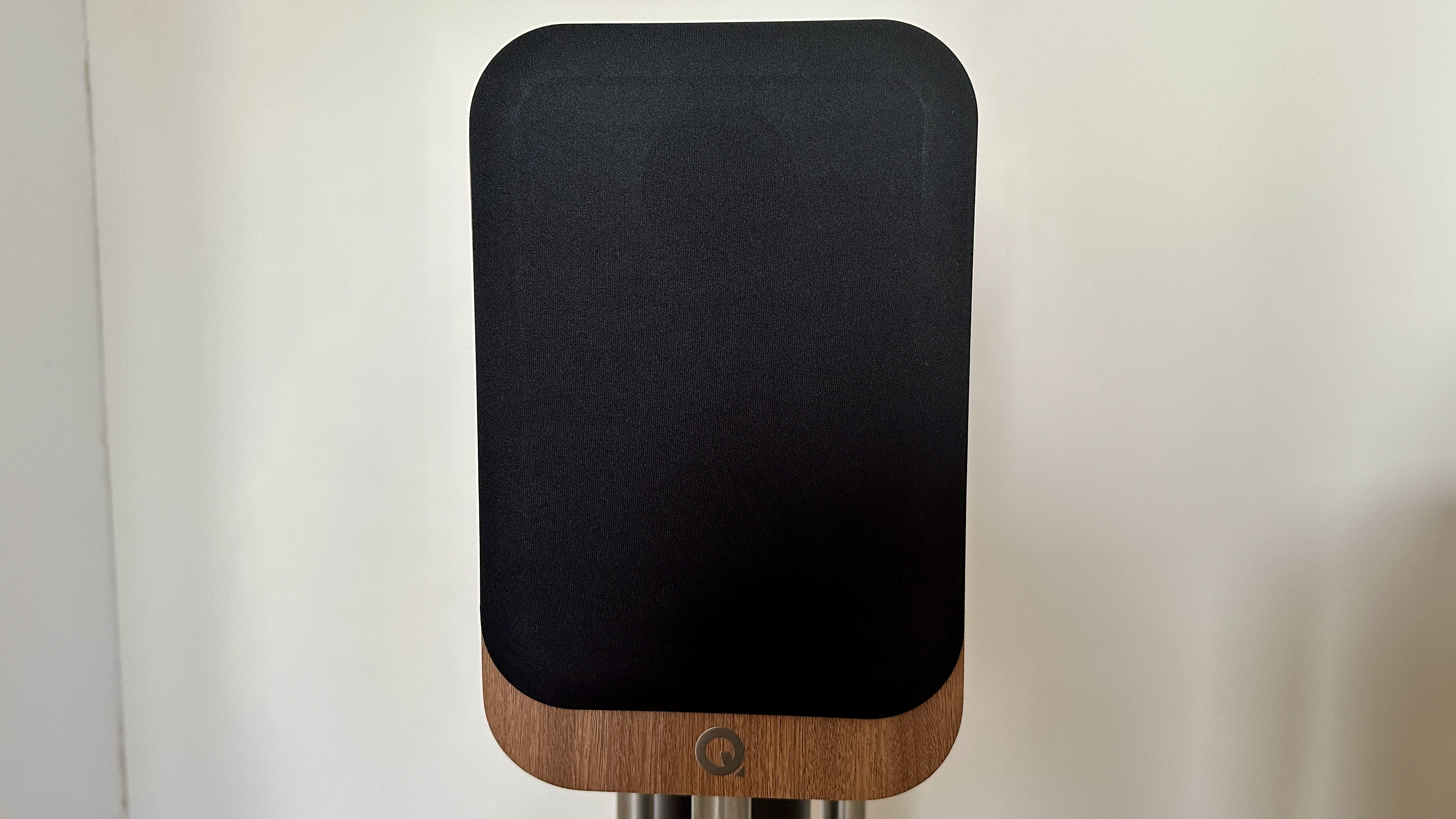
Q Acoustics 3020c review: Design
- 279 x 175 x 281mm (HxWxD)
- 5.5kg
- Choice of four finishes
The 3020c are not the first Q Acoustics loudspeakers to be longer than they are tall – but just because it’s a familiar design trope that’s based on sound engineering principles, that doesn’t make it seem anything less than slightly strange. It certainly rules out the possibility of positioning the 3020c on a regular shelf-sized shelf, and it means there will be significant overhang when positioned on a speaker stand with an ordinary top plate.
Where build and finish are concerned, we’re on equally familiar Q Acoustics ground, which is an uncomplicatedly good thing. The curved cabinet corners look good, the satin nickel driver trim gives a premium impression (as well as being a magnet for fingerprints) and the vinyl wrap covering the MDF cabinet is flawlessly applied. The outside is available in satin black, satin white or walnut as well as the oak of my review sample, while the inside features the point-to-point bracing the company has been perfecting for some time now.
There’s a final design flourish in the use of magnetically attached grilles. Not only do they cover slightly less than the entirety of the front baffle (leaving the casual ‘Q’ logo exposed), but they don’t require any visible fixings – the baffle looks unsullied when the grilles are removed.
- Design score: 4.5/5
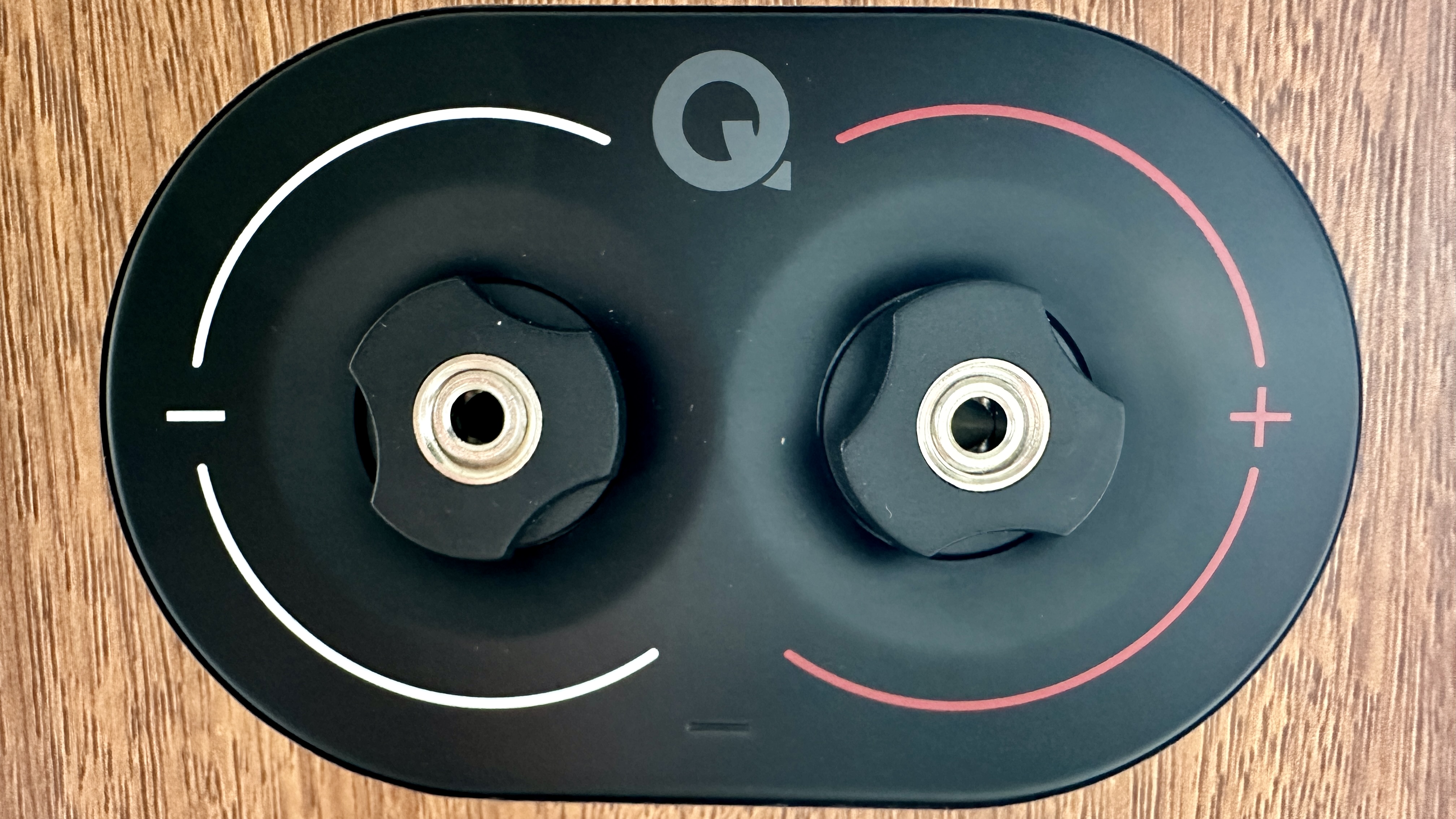
Q Acoustics 3020c review: Setup and usability
- Position the speakers securely on a shelf or stand…
- Attach speaker cable using plugs or bare wire…
- ... And away you go
Just as with ‘features’, there’s really not a lot involved in the set-up or subsequent usability of passive loudspeakers. It’s really not rocket science, and it shouldn’t take long before you’re up and running.
So, you’ll need to position your speakers securely – they are supplied with little rubber feet in order to decouple them from the surface on which they stand. Ideally, you’ll be further from them than they are from each other when you’re listening, and ideally they’ll be ‘toed in’ just a little towards you. You’ll need to attach them to your amplifier using half-decent speaker cable.
After that, it’s just a question of putting some music on and letting them do their thing…
- Setup and usability score: 5/5
Q Acoustics 3020c review: Value
It’s hard to suggest the Q Acoustics 3020c don’t represent value for money. Even in terms of the amount of stuff your $499 / £399 / AUS$899 buys, they’re impressive – these are reasonably big cabinets by prevailing standards, build quality is impeccable and the standard of finish is top-tier, too.
And when it comes to sound quality, the 3020c – while being a quite specific flavor – have a whole stack of talents that will keep you listening long after you should have stopped and started doing something else.
It’s really only those listeners who want to be able to hear the low-frequency stuff from another room who might disagree.
- Value score: 4.5/5
Should you buy the Q Acoustics 3020c?
Buy them if...
You’re after a vigorous, direct and detailed sound
They just about stop short of grabbing you by the lapels, but the 3020c are a positive and quite attacking listen nevertheless
You admire a standard of build and finish that belies an asking price
Between cabinets that are braced on the inside and curved on the outside, flawlessly applied vinyl wrap and shiny ‘satin nickel’ driver surrounds, the 3020c look like a more expensive proposition than they actually are
You have deep shelves or big speaker stands
‘Longer than tall’ is always a slightly awkward look in a loudspeaker, and you’ll need an appropriately sized surface on which to position your Q Acoustics
Don't buy them if...
You crave low-frequency impact
The bass the Q Acoustics create is textured, tonally convincing and carefully controlled – but other designs hit harder
You haven’t checked your options
The 3020c are deeply competitive, but they’re by no means your only choice at this sort of money and you should investigate the whole of the market
You feel strongly about loudspeaker proportions
If you’re even slightly freaked out by loudspeakers that are longer than they are tall then you’re going to find the 3020c more than somewhat strange
Q Acoustics 3020c review: Also consider
The Elac Debut 3.0 DB63 have a rather ungainly model name, but at around $470 / £369 per pair they’re cracking value for money. Not as visually sleek as the 3020c if you ask me, but they have the all-around sonic talent to really take the fight to the Q Acoustics.
How I tested the Q Acoustics 3020c
- Connected to a Naim Uniti Star and a Cambridge Audio EXA100
- Connected using QED XT speaker cable
- Playing a wide variety of music from a number of different sources
During my time with the 3020c the only amplification to hand was, to be absolutely honest, somewhat overspecified. But by the same token I know the way they sound pretty well, so was perfectly comfortable hooking the Q Acoustics to both the Cambridge Audio and the Naim devices using a QED speaker cable that falls just as readily into the ‘overkill’ category.
I listened to vinyl records, CDs and music streamed from Tidal in the course of the test – of all styles and types.
First reviewed: November 2024
Read more about how we test at TechRadar
Simon Lucas is a senior editorial professional with deep experience of print/digital publishing and the consumer electronics landscape. Based in Brighton, Simon worked at TechRadar's sister site What HiFi? for a number of years, as both a features editor and a digital editor, before embarking on a career in freelance consultancy, content creation, and journalism for some of the biggest brands and publications in the world.
With enormous expertise in all things home entertainment, Simon reviews everything from turntables to soundbars for TechRadar, and also likes to dip his toes into longform features and buying guides. His bylines include GQ, The Guardian, Hi-Fi+, Metro, The Observer, Pocket Lint, Shortlist, Stuff T3, Tom's Guide, Trusted Reviews, and more.
